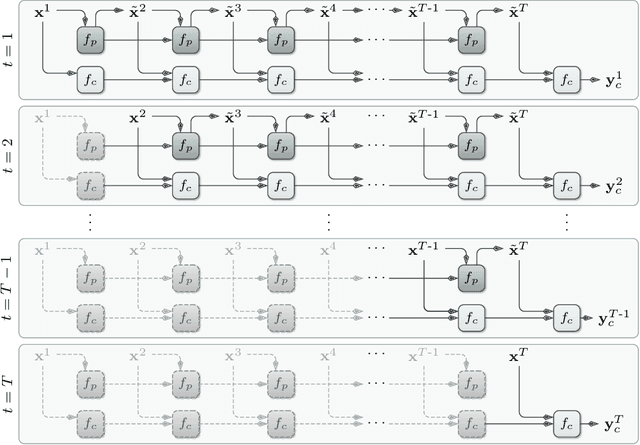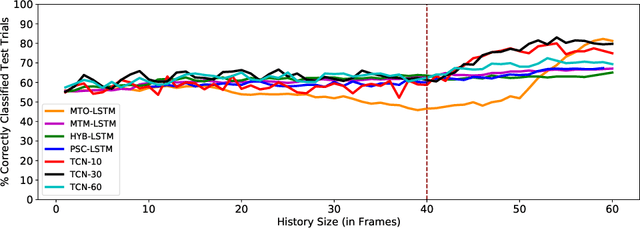Early Recognition of Ball Catching Success in Clinical Trials with RNN-Based Predictive Classification
Paper and Code
Jul 06, 2021



Motor disturbances can affect the interaction with dynamic objects, such as catching a ball. A classification of clinical catching trials might give insight into the existence of pathological alterations in the relation of arm and ball movements. Accurate, but also early decisions are required to classify a catching attempt before the catcher's first ball contact. To obtain clinically valuable results, a significant decision confidence of at least 75% is required. Hence, three competing objectives have to be optimized at the same time: accuracy, earliness and decision-making confidence. Here we propose a coupled classification and prediction approach for early time series classification: a predictive, generative recurrent neural network (RNN) forecasts the next data points of ball trajectories based on already available observations; a discriminative RNN continuously generates classification guesses based on the available data points and the unrolled sequence predictions. We compare our approach, which we refer to as predictive sequential classification (PSC), to state-of-the-art sequence learners, including various RNN and temporal convolutional network (TCN) architectures. On this hard real-world task we can consistently demonstrate the superiority of PSC over all other models in terms of accuracy and confidence with respect to earliness of recognition. Specifically, PSC is able to confidently classify the success of catching trials as early as 123 milliseconds before the first ball contact. We conclude that PSC is a promising approach for early time series classification, when accurate and confident decisions are required.
 Add to Chrome
Add to Chrome Add to Firefox
Add to Firefox Add to Edge
Add to Edge